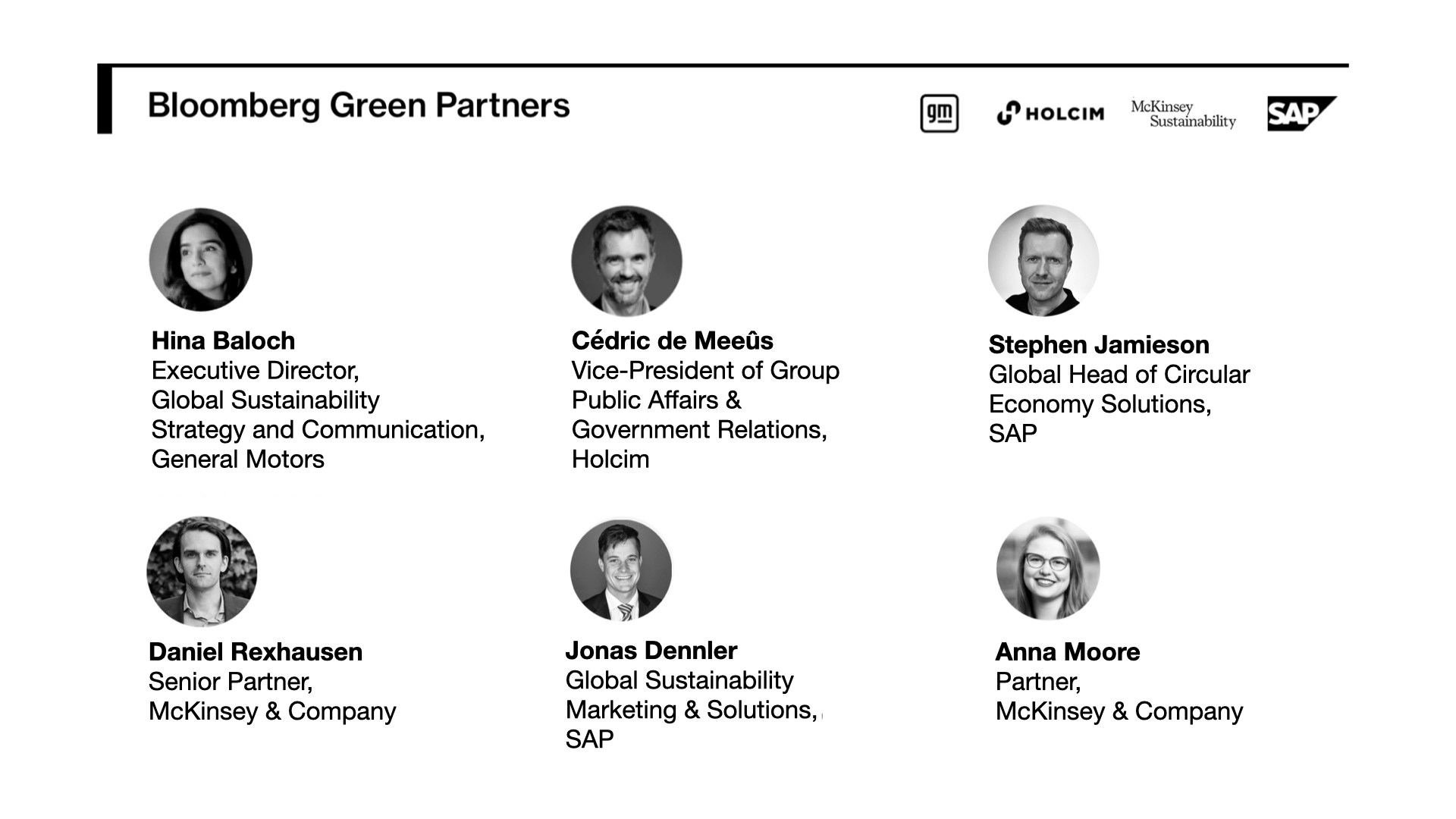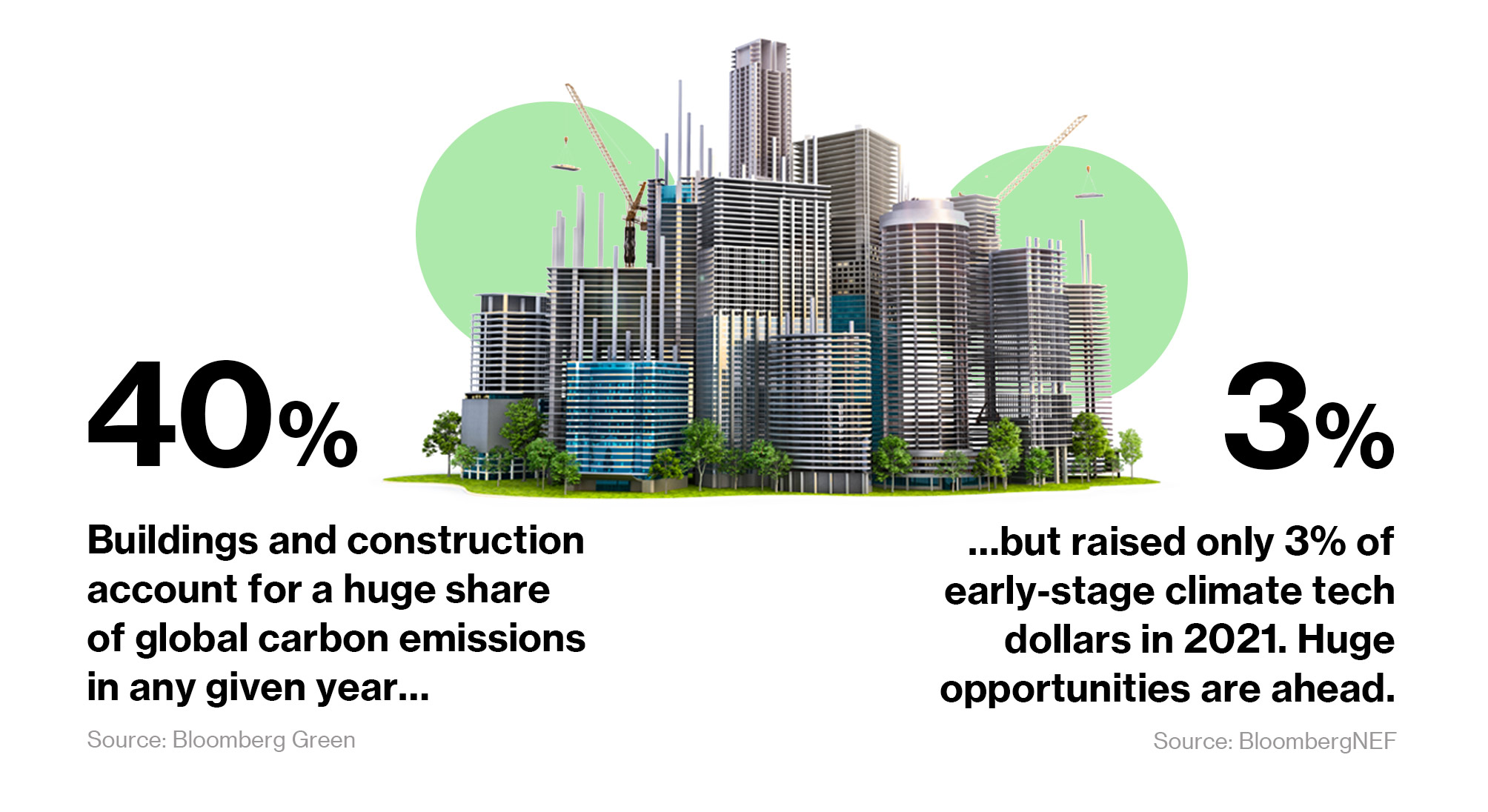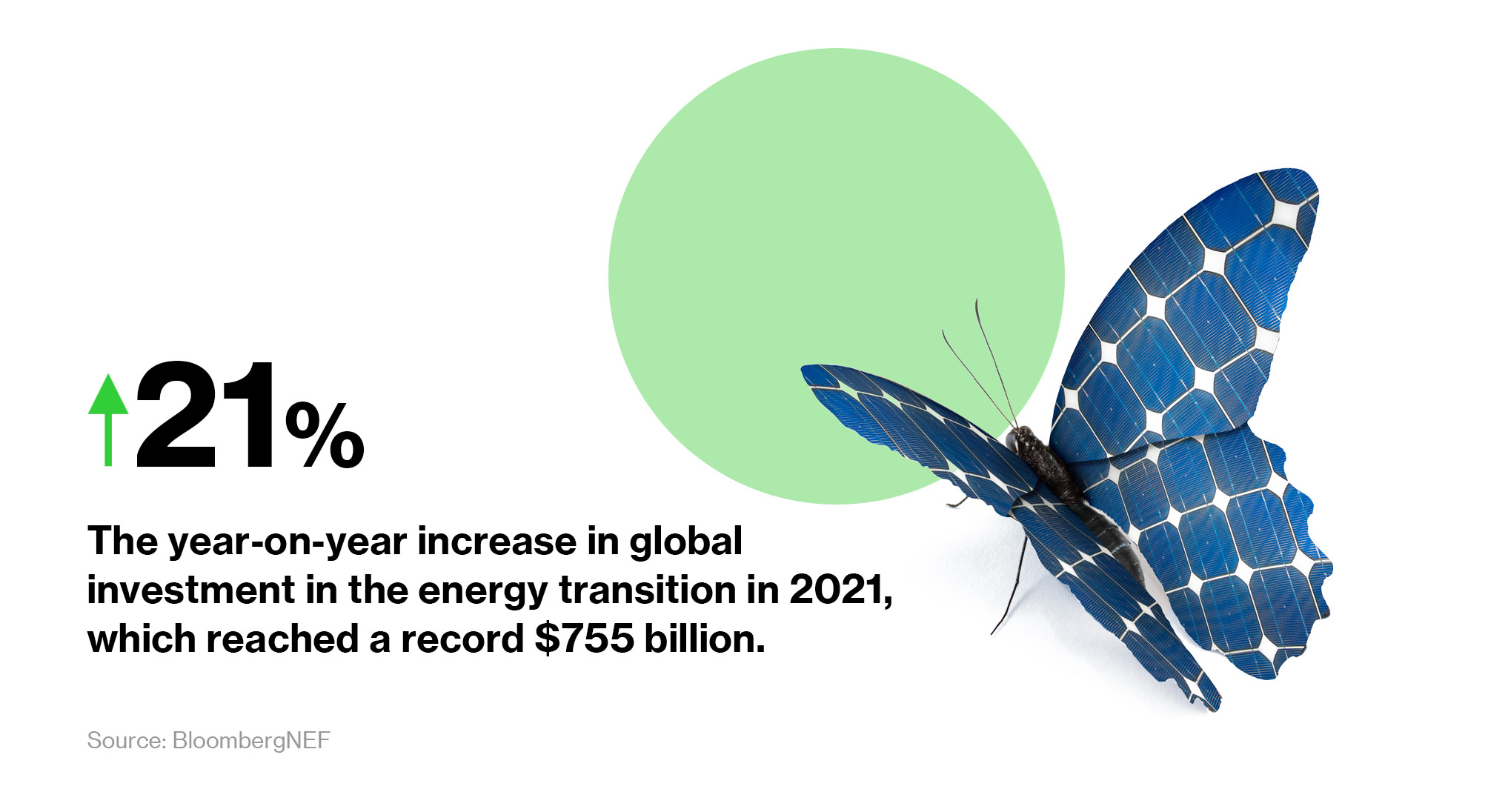COP27 Is Everyone’s Business
“Implementation” is the keyword at Sharm El-Sheikh. Through collaborative thinking and green growth, business leaders are stepping up climate action on an industrial scale.
COP26 yielded an ambitious new climate deal, with bolder language than ever before (BloombergNEF). A year on, COP27 will assess the progress that’s been made. Under the shadow of wider conflicts and deepening energy, food and economic uncertainties, climate change is being recognized as a security risk – and a decisive shift from promises and pledges to action and implementation is vital.
As global leaders gather in Sharm El-Sheikh, what is the role of business in strengthening global cooperation at a time when it’s being tested? What does climate action look like in practice? And how can businesses work across industries to keep the Paris Agreement alive?
Bloomberg Green Partners from the transportation (General Motors), construction (Holcim), consultancy (McKinsey & Company) and technology (SAP) sectors recently convened in London to discuss the priorities and urgency of COP27, and the key themes and opportunities to watch.



"Construction is a fundamental pillar of decarbonization. What is the built environment sector doing – not in 2030 or 2050, but now? We have solutions and we must deploy them at scale now. COP27 will provide the opportunity to advance game-changing legislation, such as the European Carbon Border Adjustment Mechanism, which requires substantial multilateral engagement. We will also show progress on initiatives such as the First Movers Coalition, and how commitments on trucking and concrete can be met. These are demonstrations of how an entire value chain, from real estate owners to equipment providers, can be mobilized. It shows we are taking decarbonization seriously and investing on a very large scale."

"The world consumes 100 billion metric tons of materials each year. We leave 91 billion metric tons of that to fate in the natural environment. Only 9% gets recycled or reused in some way. What are the interventions and software engineering we can put in place to create a systematic shift toward a circular economy? Whether we're talking about sustainable materials or agriculture, some really good points of view are coming from the business community. In terms of understanding the business opportunity and reimagining how we're doing things, the topic of regenerative business has a lot of room to grow."


“In the brown to green transition, we will see competition between decarbonization technologies – between decarbonized steel versus decarbonized aluminum, for instance, or a green cement product versus cross-laminated timber. As a result, there will be some stranded sustainability assets, and winners and losers along each tech pathway. And frankly, some business models won't work anymore. Volume-based cell phone contracts where users are given a new phone every couple of years, for example, may not survive in a lower consumption economic system. We're now seeing the trade-offs of the brown to green transition.”

“Meaningful action and acknowledgement of differential vulnerability are both important aspects of addressing global climate change. Big emitter economies must diligently and responsibly transition to a low carbon economy to help close the gap between the 'global south' and the developed world for climate effects. For the transportation sector, working across the supply chain, producing accessible and affordable EVs, investing in charging infrastructure and renewable energy sources, and advocating for smart policy action will be key to driving holistic change and helping achieve ambitious targets.”


“The supply gap in sustainable materials really fuels innovation and investment because existing production capacity is not moving fast enough to keep up with demand. Lots of small startups are born out of nothing, then scale tremendously fast to address this gap with their innovations. It's clear that change requires overcoming traditional company and sector boundaries and thinking in ecosystems. Low-carbon materials, for example, are part of a larger equation: What amount of net carbon emissions can a specific material reduce across the entire value chain? What's the actual commitment of different players? What are the alternatives and what do they cost? And that's not just steel, aluminum and copper. We also see a sustainable materials opportunity in bio-based plastics and recycling. The entire equation changes again with the next innovation.”

“I would like to see companies and governments come together to strengthen collaboration for climate action. Legislation certainly impacts the economy and impacts business – but it's also the other way round. How can businesses participate in the whole COP27 negotiation, especially by sharing success stories and industry insights? Countries, businesses and cities that are building trustful relationships with other companies and governments are showing us how to be a part of the solution.”
